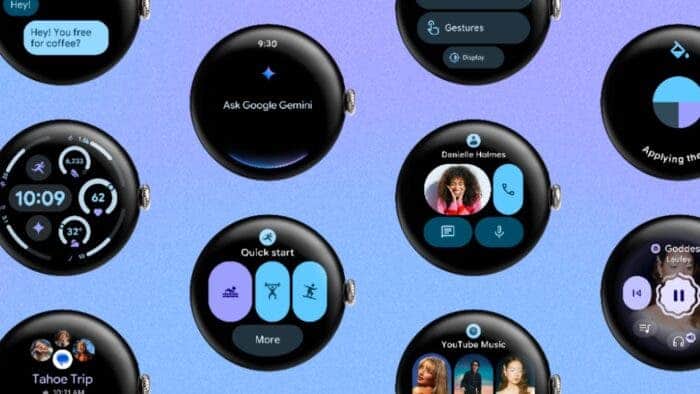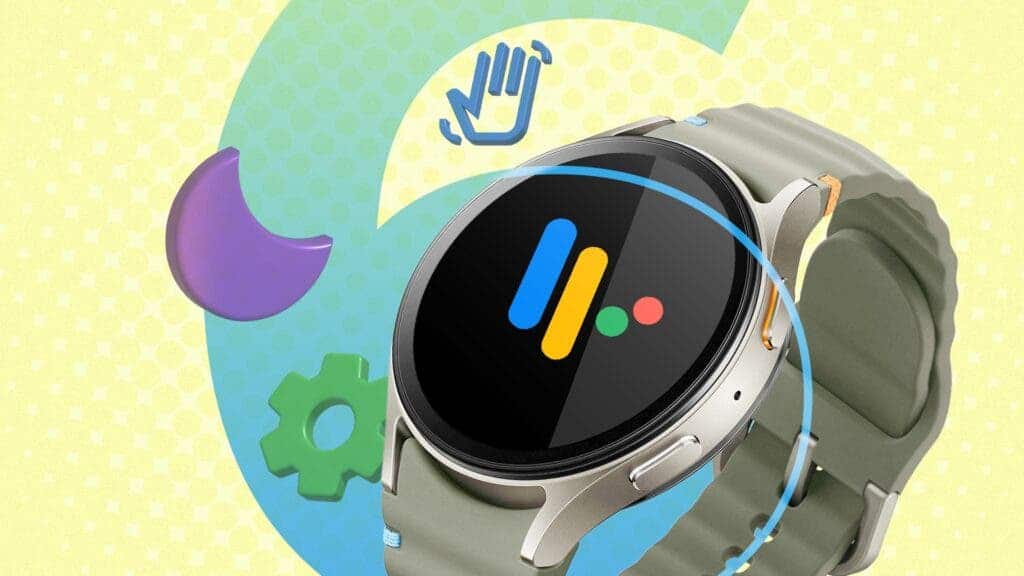newsTech
Google’s Wear OS 6: What’s New, What’s Missing, and What’s… Familiar?
Nick Papanikolopoulos
May 21, 2025

At its I/O 2025 event, Google formally introduced Wear OS 6, the next iteration of its smartwatch platform. As expected, the company emphasized performance and design polish over sweeping changes. A 10% improvement in battery life is the most tangible enhancement, though how that translates to real-world usage will depend on implementation.

A Developer Preview is now available, but as the name suggests, access is currently limited to developers. The general release is slated for later this year, though Google did not provide a specific timeframe.
A Familiar Focus: Battery Efficiency
Battery life has long been a weak point for many Wear OS devices. Google’s promise of a 10% improvement in Wear OS 6 is therefore a welcome, if modest, development. The company attributes the gains to broad platform-level optimizations. These likely include refined background processes, more efficient sensor management, and streamlined animations.
However, the claim raises a familiar question: how much of that benefit will users actually see? Lab-tested improvements do not always survive the complexity of real-world conditions. Even so, any incremental gain is an improvement over stagnation.
Material 3 Expressive: Visual Consistency, Finally
On the interface front, Wear OS 6 introduces full support for Material 3 Expressive, an extension of the dynamic theming introduced in earlier Android versions. It’s not new in concept, but this is the first time it has been fully tailored for circular smartwatch displays.
Notably, the new UI introduces a three-slot tile structure—comprising a header, main content section, and a footer—designed to support more consistent glanceable information. The layout aims to address long-standing inconsistencies in how third-party tiles have appeared and functioned across devices.
More importantly, the overall design feels more deliberate. Colors, spacing, motion—all of it reflects a unified design system that finally treats the smartwatch as a standalone product, rather than an afterthought of the smartphone experience.
There are also usability refinements, such as smoother list scrolling and more predictable transitions. These sound minor on paper, but they tend to be the kinds of changes users notice subconsciously. In short, the experience feels less fragmented.
Media and Watch Face Enhancements
Wear OS 6 also brings updates to media controls, allowing for faster access and improved responsiveness when switching content. Additionally, users will now have the option to set personal photos as watch face backgrounds. This may seem like a minor cosmetic change, but it underscores Google’s ongoing shift toward personalization, something rival platforms have emphasized for years.
Read Also: Google launches an AI filmmaking tool
It’s also worth noting that the UI now adapts more intelligently to larger screen sizes, a nod to the growing range of form factors in the smartwatch space.
Developer Tools and Ecosystem
For developers, the new update introduces revised Jetpack libraries—Wear Compose Material 3 and Wear ProtoLayout Material 3—to help apps align with the new design language. These updates bring typography adjustments, more flexible layouts, and dynamic color adaptation. The goal appears to be not just aesthetics, but also improved consistency between watch apps and their phone counterparts.
That said, it remains to be seen how many developers will adopt the new tools quickly, or at all. The platform’s long-standing fragmentation continues to be an obstacle.
Release Timing: Unsurprisingly Vague
As of now, Google has confirmed that Wear OS 6 will be available “later this year.” That’s a familiar phrase, and a frustrating one. Historically, major Wear OS updates have rolled out gradually—Pixel Watches first, followed by select devices from Samsung, Fossil, and others. Google did not comment on backward compatibility or how many existing devices will support the full feature set. That ambiguity is common, but it leaves current users with unanswered questions.
Disclaimer: We may be compensated by some of the companies whose products we talk about, but our articles and reviews are always our honest opinions. For more details, you can check out our editorial guidelines and learn about how we use affiliate links.Follow Gizchina.com on Google News for news and updates in the technology sector.
Source/VIA :
GSMArena